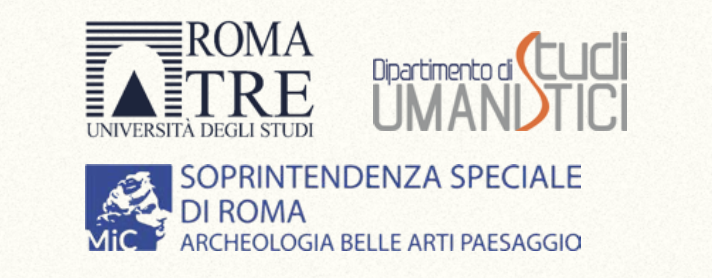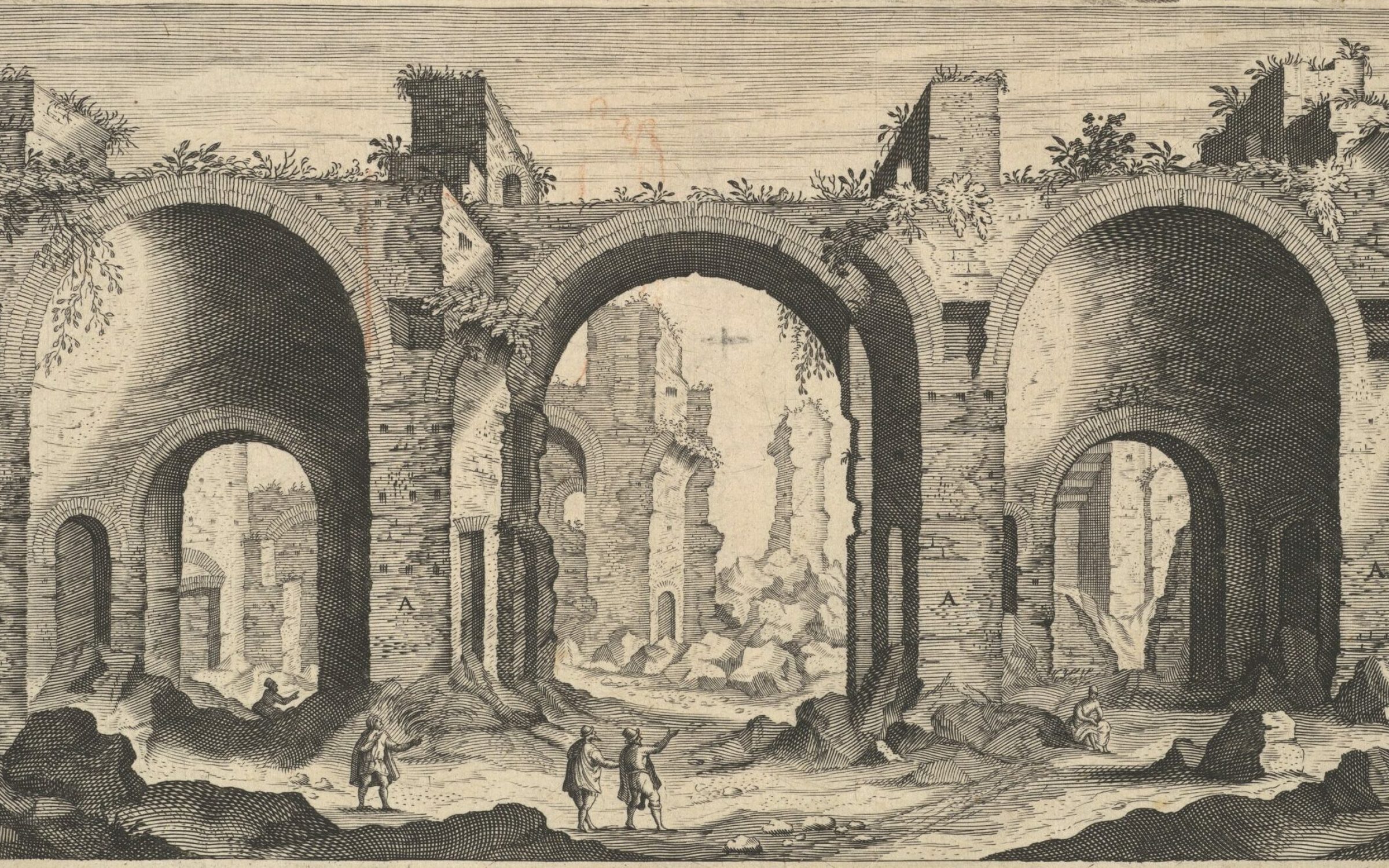Roman Baths and Agency
The Human Factor in Designing, Building, Using, Experiencing, and Maintaining Bath Buildings in the Roman Territories
International conference and round table on Roman baths
Wednesday, 18 – Friday, 20 October 2023
Rome, Italy at the academia belgica
Registration
This event is free to attend. To register, please use the link below to add your preferred sessions:
Programme
Below is the programme for the three-day conference. This information and event registration can also be found on Ghent University’s webpage.
18 October
9:00–9:15 Registration
9:15–9:30 Introduction and welcome talk
9:30–10:15 Keynote lecture 1: Maura Medri (Università degli Studi Roma Tre) — ‘Terme in città. Investimenti pubblici e privati a Ostia Antica’ (Discussion: Konogan Beaufay)
10:15–10:40 Coffee break
10:40–12:00 Session 1: Design, architects and commissioners
Chair: Janet DeLaine (University of Oxford)
- 10:40–11:00 Virginia Garcia-Entero (Universidad Nacional de Educación a Distancia) — ‘Terme pubbliche in Hispania: adozione e sviluppo dell’abitudine balneare’
- 11:00–11:20 Allison Smith (Indiana University Bloomington) — ‘Reconstructing Plans: Ancient Architects, Benefactors, and the Baths of Central Italy’
- 11:20–11:40 Silvia Gazzoli (Scuola IMT Alti Studi Lucca) — ‘Ricostruire, restaurare e decorare balnea e thermae’
- 11:40–12:00 Discussion
12:00–13:00 Lunch
13:00–14:20 Session 2: Senses and perceptions
Chair: Werner Heinz (Independent researcher)
- 13:00–13:20 Giacomo Savani (University of St Andrews) — ‘Rural Baths in Roman Britain: A Colonisation of the Senses’
- 13:20–13:40 Bernadette Descharmes (Technische Universität Braunschweig) — ‘Bath and Body: Martial and the sensual experience of physical flaws in the Roman bath’
- 13:40–14:00 Gideon Nisbet (University of Birmingham) — ‘Epigram takes a bath’
- 14:00–14:20 Discussion
14:20–15:20 Session 3: Small finds in Roman baths
Chair: Karen Jeneson (Thermenmuseum Heerlen)
- 14:20–14:40 Maryl B. Gensheimer (University of Maryland) — ‘“Cameos, intaglios… and similar materials:” Small finds, self-representation, and the lived experience of Roman baths’
- 14:40–15:00 Stefanie Hoss (Universität zu Köln) — ‘What small finds can reveal about the life in the baths?’
- 15:00–15:20 Discussion
15:20–15:50 Coffee break
15:50–17:10 Session 4: Adoption of bathing practices in other regions
Chair: Jens Koehler (John Cabot University)
- 15:50–16:10 Paola Santospagnuolo (Freie Universität Berlin) — ‘The introduction of the Roman bathing culture in Sicily’
- 16:10–16:30 Amanda Hardman (McMaster University )— ‘A new bath in town: The integration of Roman baths into Greek urban spaces’
- 16:30–16:50 Craig Harvey (University of Alberta)— ‘Balnea sine fine: Early Nabataean Adoption of Roman-style Baths’
- 16:50–17:10 Discussion
17:10–18:00 Keynote 2 – Fikret Yegül (University of California Santa Barbara) — ‘Baths, Beds, and Beyond: Some Thoughts on ‘Hall Type’ Baths from Syria to Anatolia (and Beyond)‘ (Discussion: Sadi Maréchal)
19 October
9:30–9:45 Registration
9:45–10:30 Keynote lecture 3 – Lynne Lancaster (University of Cincinnati) — ‘Bath Construction in the Roman West: A Reflection of Human Agency and Catalyst for Innovation’ (Discussion: Konogan Beaufay)
10:30–11:00 Coffee break
11:00–12:20 Session 5: Technical matters, management of resources
Chair: Silvia Garcia Soutelo (Universidad Autónoma de Madrid)
- 11:00–11:20 Bas Beaujean, Marta Galindo Díaz, Stef Boogers (KULeuven) — ‘Resource management and cost-efficient design in the building, modifying and functioning of the Roman Imperial Bath-Gymnasium of Sagalassos (SW Anatolia)’
- 11:20–11:40 Gemma Jansen (Independent researcher) — ‘Operating Roman hot water boilers’
- 11:40–12:00 Hubertus Manderscheid (Independent researcher), Matilde Carrara (Independent researcher) — ‘»Aliquid novi luxuria«. Le piscinae calidae con il c.d. samovar’
- 12:00–12:20 Discussion
12:20–13:20 Lunch Break
13:20–14:20 Session 6: Users and usages
Chair: Giacomo Savani (University of St Andrews)
- 13:20–13:40 Michael Mailfert (Université de Liège/Université de Strasbourg)— ‘Meeting at the thermae: A socio-spatial analysis of imperial baths in the city of Rome’
- 13:40–14:00 Linda Dobosi (Eötvös Loránd University) — ‘Bathing soldiers – Roman military baths in Pannonia’
- 14:00–14:20 Inge Uytterhoeven (Koç University Istanbul) — ‘Bathing at Home. A Diachronic Approach to the Multiple Roles of Private Baths in Roman and Late Antique Asia Minor’
- 14:20–14:40 Discussion
14:40–15:10 Coffee Break
15:10–15:55 Keynote lecture 4: Monika Trümper (Freie Universität Berlin) — ‘Designing and Experiencing the Stabian Baths at Pompeii’ (Discussion: Sadi Maréchal)
15:55–16:15 Conclusions of the different sessions
16:15–17:00 Book presentation: Nathalie de Haan (Radboud University Nijmegen) and Kurt Wallat (Independent researcher) — ‘The Central Baths at Pompeii. The Archaeology of a Building Site’ (‘Die Zentralthermen (Terme Centrali) in Pompeji. Archäologie eines Bauprojektes’, Quasar, 2023).
17:00–18:00 Reception
20 October
9:00 – 10:30 Lightning Round
- Catarina Felicio (Universidade NOVA de Lisboa) – Building the public balnea of Conuentus Scallabitanus (Lusitania)
- Simeon D. Ehrlich (Hebrew University of Jerusalem) – What really happened at the bawdy baths of Ashkelon?
- Karen Jeneson (Thermenmuseum Heerlen) – ‘A reflection of an urban society at the edge of the empire: the case of the bath house of Coriovallum’
- Cristina Hernandez (Mt. San Antonio College, California ) – ‘Balnea Aestiva, Balnea Hiemalia: Seasonal use and sensory experience in Pompeian domestic baths
- Monika Rekowska (University of Warsaw), Demetrios Michaelides (University of Cyprus) – Private bathing at Nea Paphos, Cyprus
- Juhasz Lajos (Eötvös Loránd University) – Bathing in money
- Marie Theres Wittmann (University of Oxford) – Bathing without soap? Evidence for and economic impact of ancient toiletries
- Discussion
10:30–11:00 Coffee break
11:00–13:00 Round table discussion (Chairs: Sadi Maréchal and Konogan Beaufay)
Afternoon: optional visit to the subterranean parts of the Baths of Caracalla
Conference posters
All posters will be made available via this link: https://romanbaths2023.virtualpostersession.org/
- Andrea Schär (Independent researcher / Associate researcher at the University of Bern) – ‘Healing baths or how the Roman bathing culture became the cornerstone of a timeless cultural phenomenon. The particular case of Baden (Switzerland)’
- Silvia González Soutelo (Universidad Autónoma de Madrid and Madrid Institute for Advanced studies), Teresa Soeiro (CITCEM-FLUP), Juan Diego Carmona Barrero (Universidad Autónoma de Madrid) and Claus Seara Erwelein (GEAAT-Uvigo) – ‘Old buildings, new discoveries. Architectonical novelties about the healing spa of Termas de São Vicente (Penafiel, Portugal)’
- Jonas Zweifel (Freie Universität Berlin) – ‘The Baths of Invidiosus in Ostia: Adaptation and Improvisation in a changing environment’
- Julio C. Ruiz Rodríguez (Independent researcher) – ‘Le terme pubbliche di Tarraco (Hispania citerior): i reperti scultorei’
- Rory McLennan (The University of Queensland) – ‘Diachronic change in Roman waterproof lining technology – Evidence from the Bay of Naples and Rome’
- Dávid Bartus, Melinda Szabó (ELTE Eötvös Loránd University) – ‘Bathing soldiers in Brigetio’
- Alessio Galli, Chiara Mendolia (Italian Archaeological School at Athens SAIA) – ‘Bath complexes on the border between Greece and Rome: diffusion models along the Via Ionia’
- Giordana Franceschini (Eberhard Karls Universität Tübingen) – ‘Bathing Practices and Political Inadequacy in 6th century Constantinople: John Lydus’ account of the praetorian prefect John the Cappadocian’
- Tünde Lang (Brigetio Öröksége Látogatóközpont, Komárom – Pécs University) – ‘Roman villa baths in the Middle Danube provinces’
- Alper Yılmaz (Ondokuz Mayıs Üniversitesi) – ‘Roman Baths of Parion in the Province of Asia: Similarities and Differences from Roman Bath Architecture’
- Jens Koehler (John Cabot University – The American University of Rome) – ‘From Nysa to Centumcellae. Alkibiades visits the Terme Taurine’
- Tony King (University of Winchester) – ‘Romano-Celtic Temples and Baths – orthopraxy, cleanliness and ritual dirt’
- Angela Bosco (Università di Bologna) – ‘Planning and building a nymphaeum in a bath: the case of Terme Stabiane and Terme Suburbane in Pompeii’
- Giulia Giovanetti (Ministero della Cultura – Parco archeologico del Colosseo) – ‘’Balnea’ privati nel paesaggio urbano di Roma e Ostia in età tardoantica’
- Giacomo Antonelli (Independent researcher) – ‘The baths of the Roman town of Ocriculum’
- Mariya Avramova (Bulgarian Academy of Sciences) – ‘The thermal complex at Starozagorski mineralni bani – a new perspective on a well-known site’
- Vane P. Sekulov (Institute for Protection of Cultural Monuments and Museum – Strumica, North Macedonia) – ‘BANJA BANSKO … time flows … the spring is still there’
- Samuli Simelius (University of Helsinki) – ‘Baths for all or baths for some? Pompeian baths in relation to the population’
Organisation
This conference has been organised by CSCA Ax:son Johnson Morgan Fellow Dr Konogan Beaufay and former CSCA Visiting Scholar Dr Sadi Maréchal (Ghent University).
In collaboration with Maura Medri (Università degli Studi Roma Tre)




